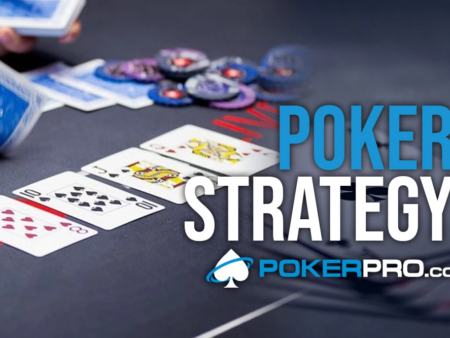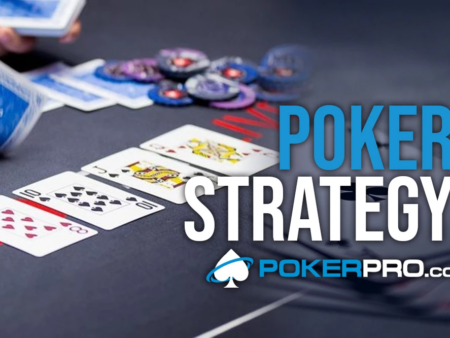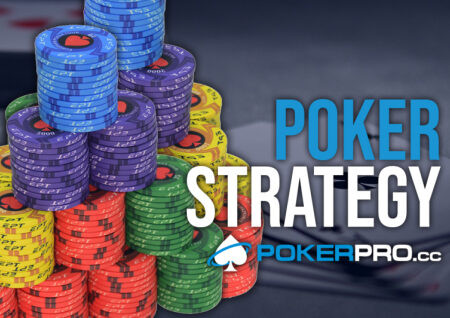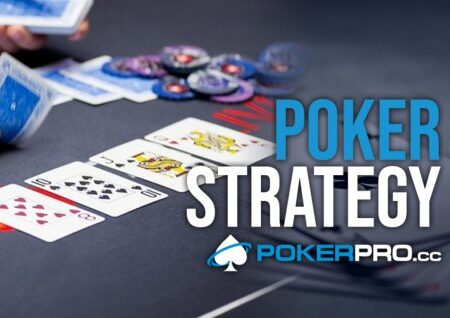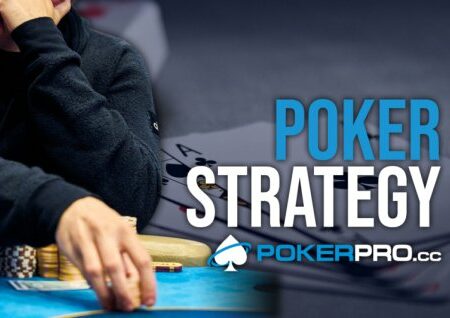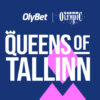Today we’ll be looking at how we approach playing the final table of a progressive bounty tournament when we are the big stack. We already covered …
Playing as a Big Stack on PKO MTT Final Table
Today we’ll be looking at how we approach playing the final table of a progressive bounty tournament when we are the big stack.
We already covered how to change our play as the middle and short stack because of the pressure that the big stack can put on us but now we need to examine more closely how exactly that looks like.
Obviously with only a few people left on the final table, with heavy ICM implications the big stack has quite an upper hand since he can play more wide and apply pressure while the other stacks are waiting for each other to bust so they can secure the ladder.
But even with the aforementioned advantages we need to make sure to study these kinds of spots so we can walk the line between being too tight and not taking advantage of the situation and being too wide and punting our stack.
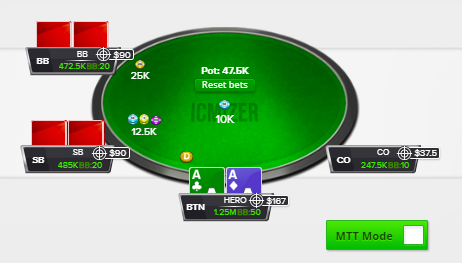
Let’s start with a situation that for anyone that has been reading these articles will look quite familiar. There are 4 people left on a final table. There are two middle stacks with 20bb, a short stack with 10bb and this time we are the chipleader with 50bb.
Raise calling two midstacks
The first thing we’ll look at is open raising, and raise calling facing different kind of opponents with different bounties to see how those factors affect our strategy.
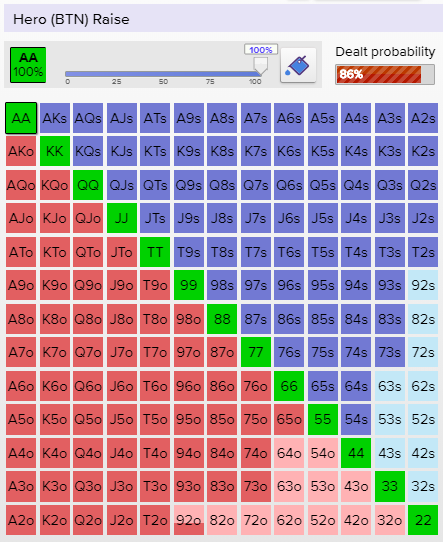
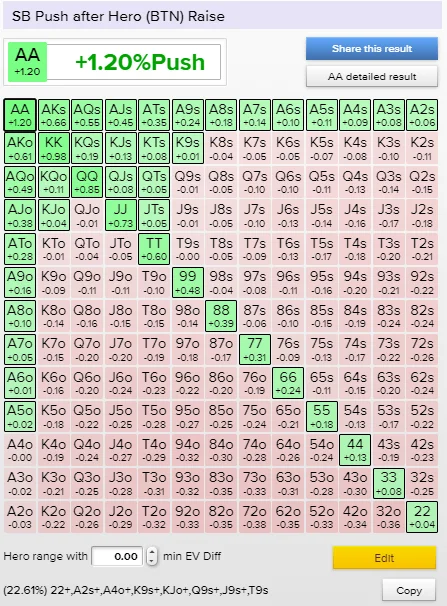
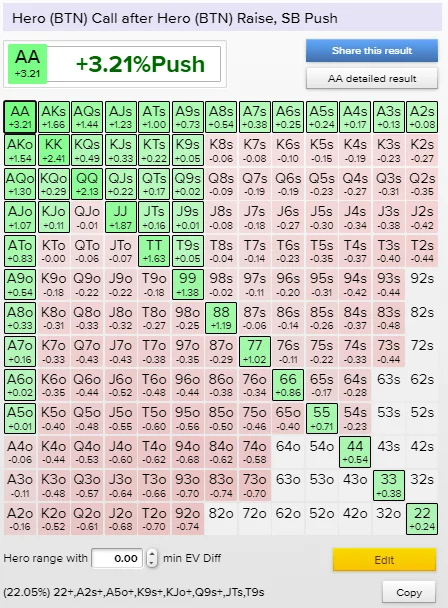
First thing we can see that is quite intuitive is that we get to open very wide. In Nash conditions ICMIZER recommends raising 86%, basically opening every hand except the lowest unsuited and suited combos.
Our opponents in the small and big blind have to respond quite timid because of the stack distribution and big ICM considerations. We see that the SB that has around 13x starting bounty can only shove 23% – all pairs, suited aces, suited broadways, A5o and better, and KJo+.
As a response hero gets to call very wide, basically the same range as the villian is shoving – 23%.
In situations where the middle stack is shoving around 20bb with a bounty bigger than 8x and we are the chipleader that can afford to lose the all in our calling range is almost always the same as the shoving range as we can see when we increase the rejaming range to 30%.
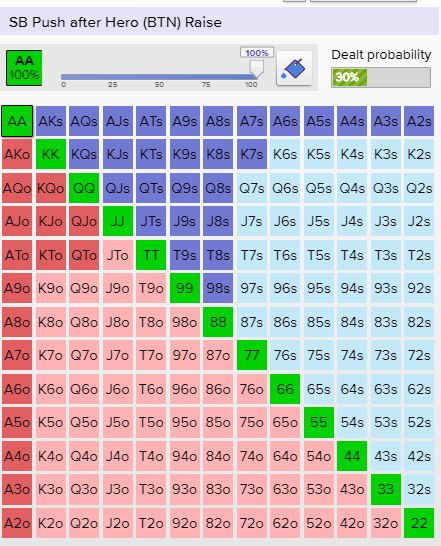
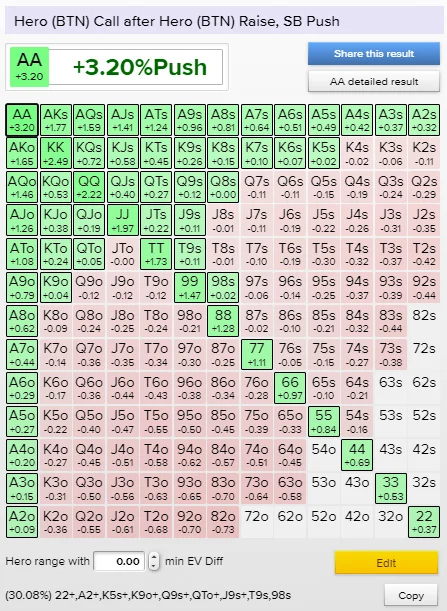
Raise calling BB shortstack
Another interesting spot may occur with the shortstack being in one of the blinds let’s say BB and a middle stack in the SB
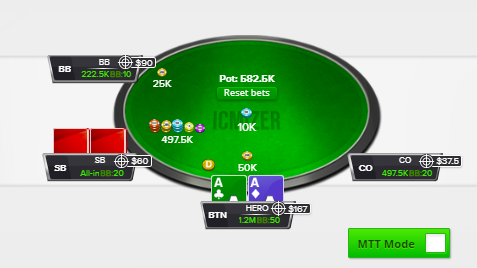
Hero gets to open even more aggressively than in the previous example – 89% since we now have a shortstack in the blinds which we want to knock out.
However, the SB knows this and can also respond by rejamming a wider range then previous – 29% but with an 8x bounty we still get to call a range that mirrors his.
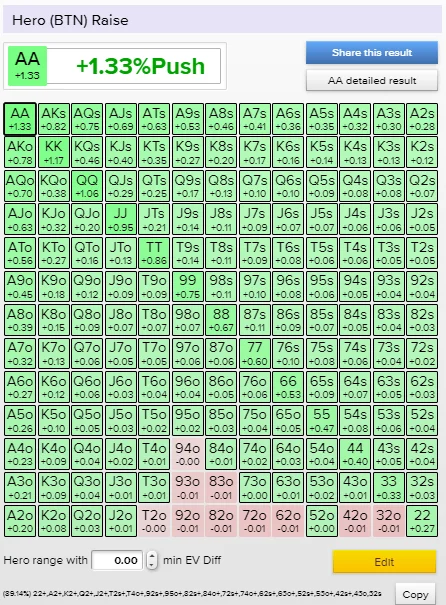
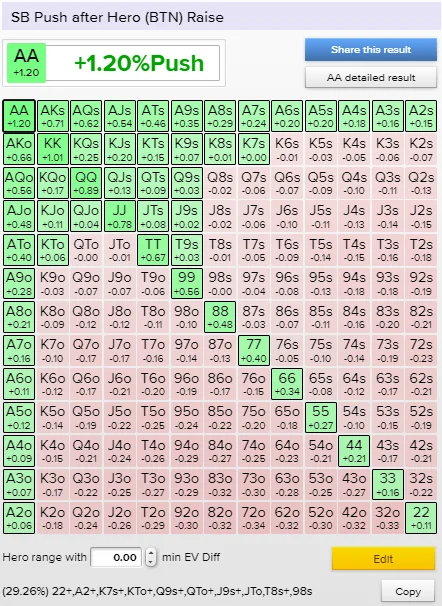
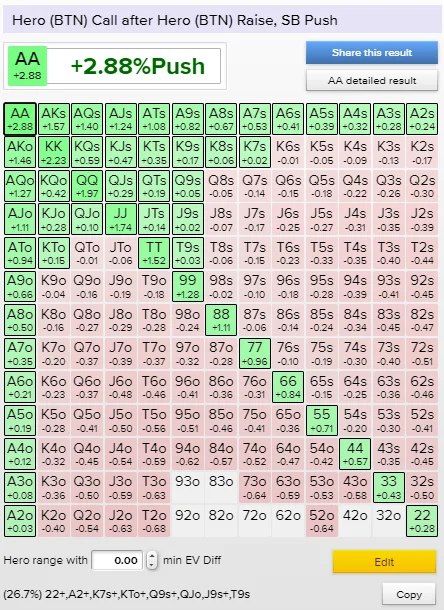
Raise calling vs short BB
If the SB folds and we face a jam from the short stack BB we are in a dream situation and get to call all of the hands we opened, if his bounty is bigger than 8x. When his bounty starts getting smaller, we open less hands on the BTN and also start folding some hands like offsuited Q2o-Q7o and J3o-J6o to rejams.
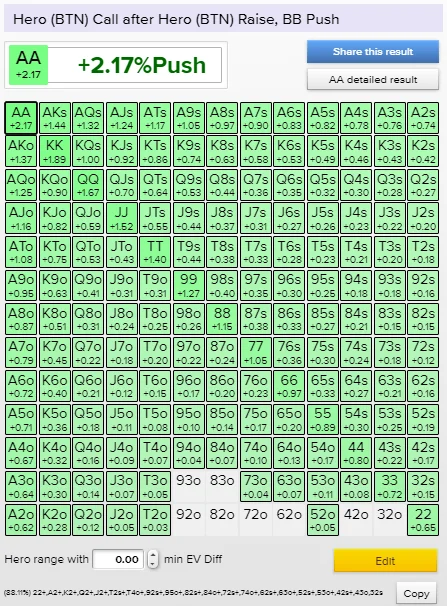
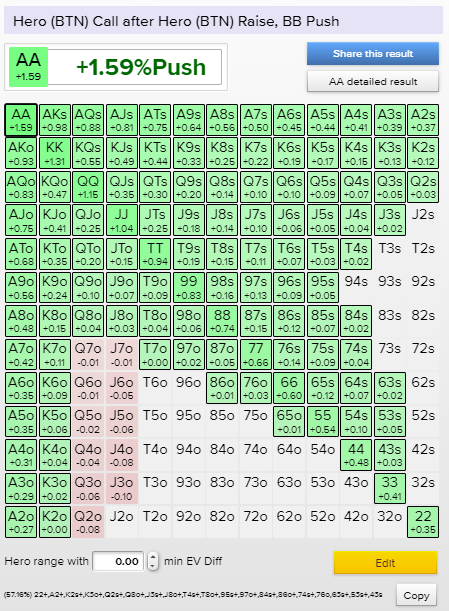
Open shoving
We do have another option in this kind of stack distribution and that would be to open shove. That way we deny the SB the chance to rejam and fold us of our hands and it’s also very difficult for both the blinds to call because of ICM so we gain a lot of EV by shoving aggressively.

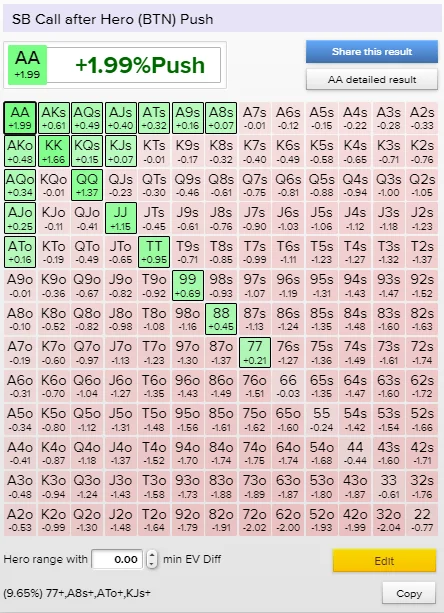
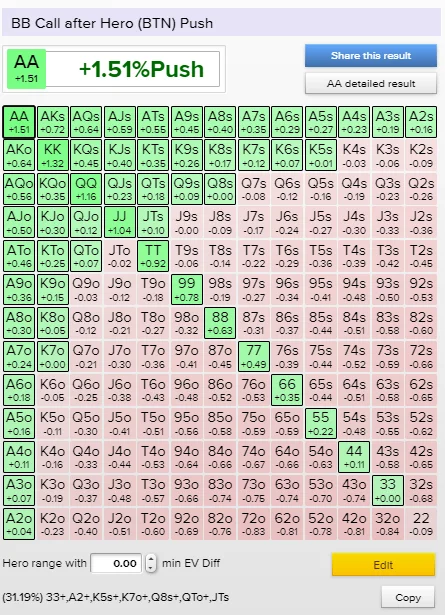
As we can see we get to shove 68% of our hands and the SB can only call with 10% which leaves us heads up with the BB who we don’t mind getting called by.
If we feel like the SB is going to call wider then what he is supposed to, we can start folding some of our worst shoving hands so that he has less equity when he calls.
Reshoving
Another thing we can focus on when playing with a big stack is reshoving ourselves when one of the midstacks opens. Their raise calling ranges are pretty tight so we can punish players that open to wide very easily but shoving a lot.
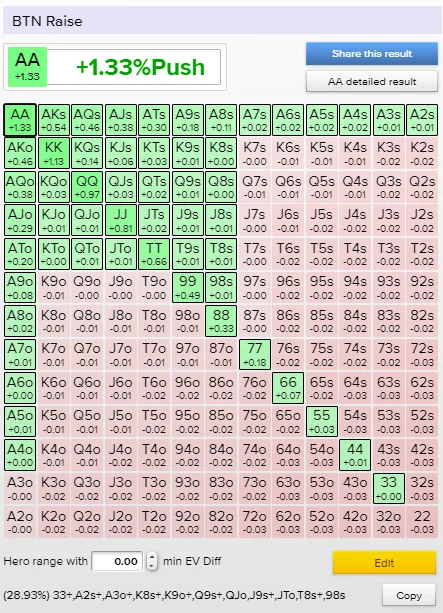
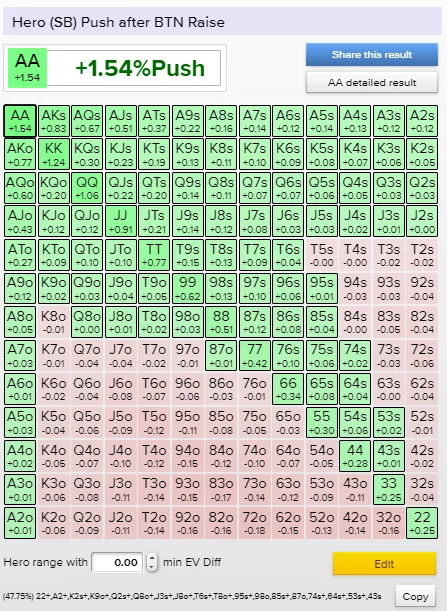
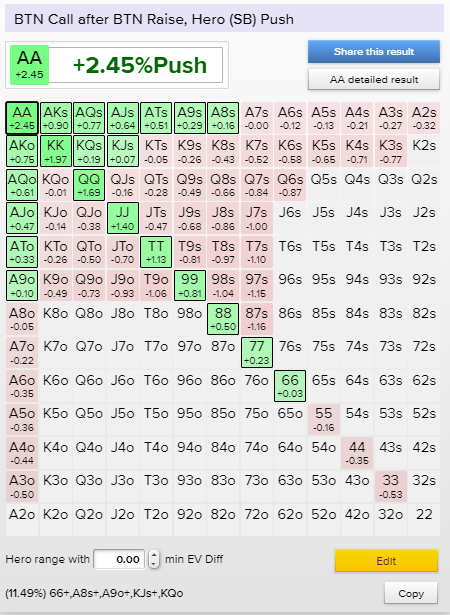
In equilibrium play the BTN would open 29% of his hands still trying to get heads up with BB and win the bounty, but the hero in the SB can still rejam 48% and the BTN is forced to fold most of his hands only calling the top 11% of his range.
Calling shove
The BTN could use a similiar strategy that we used in a previous example where he could just open shove or fold and force us to make a big call or leave him heads up with the BB for the bounty
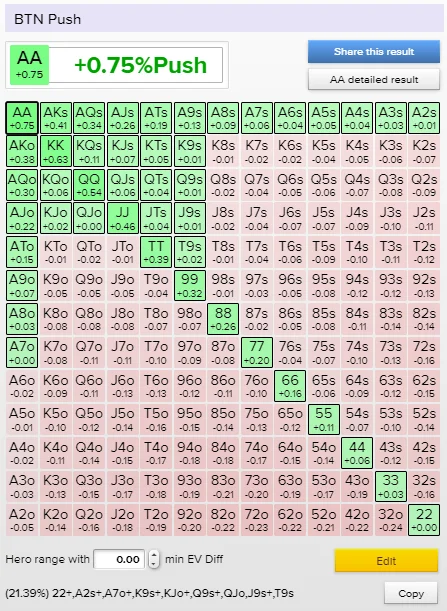
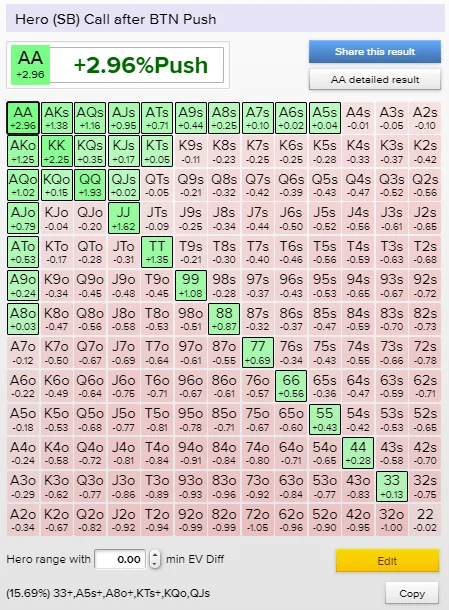
We can see the BTN can’t shove very wide either only 21% and we still get to call 16% with hands like KTs and 33.
Conclusion
When playing a big stack on a final table the most important thing is to be aggressive and we have seen that throughout this article from shoving wide into short stacks to rejaming when facing opens from middle stacks.
We get to dictate the play and try and accumulate both bounties and chips that we will be winning because of tighter strategies our opponents are using since their hands are tied because of ICM.
However, be vary of impatient recreational players that might call of your openshove 3bet shove too wide thus making your play ICM suicide in some spots. Most efficient strategy versus those players who are not versed in understanding ICM implications of being mid stack is playing “smallball”, shift bottom of your 3betshoving hands to flat, instead of openshoving, use min raise or limp and then apply pressure postflop.
In some of the next articles we will cover playing different pre flop strategies vs different types of players as a bigstack on the final table.
If you want to see some specific strategies on final table or any other topic either theoretical or based on hand history or maybe review of some historical hands from big events let us know.
